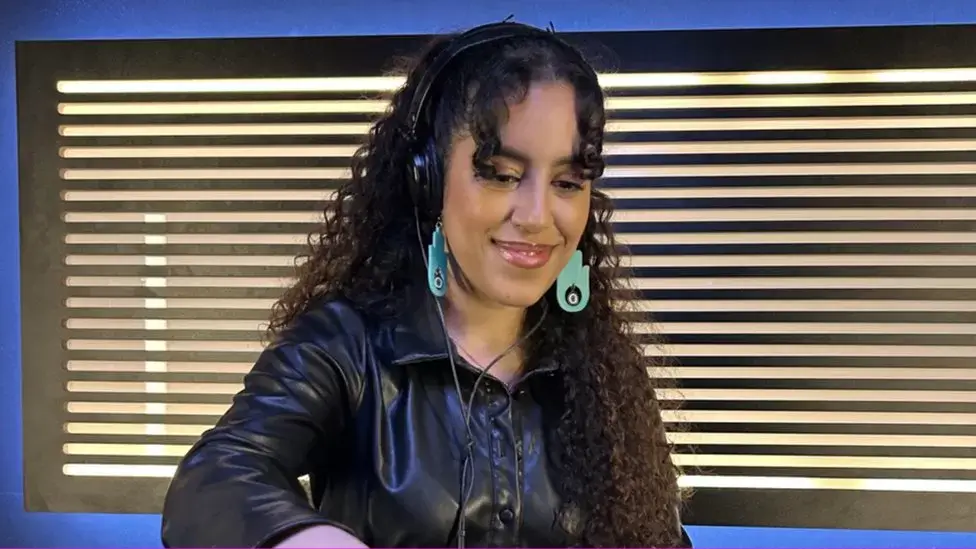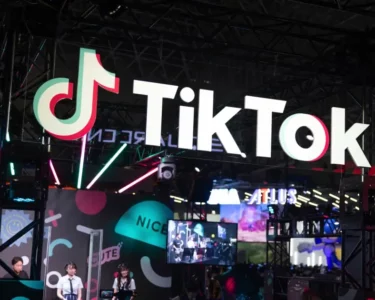In the vibrant atmosphere of a pulsating nightclub, the music pounds, the lights flash, and the crowd revels in the energy of the moment. As you gaze up at the DJ booth, you realize something unusual—the music is seamlessly flowing, but there’s no human presence behind the decks. It’s an AI-generated mix, a product of sophisticated mixing software that has become increasingly prevalent in the dance music industry. However, concerns have arisen about the potential ramifications of this technological advancement, particularly with venues cutting back on budgets. The question on many minds is whether a computer program can ever replace the profound connection between a DJ and the crowd.
Nooriyah, a 28-year-old DJ based in London, firmly believes that such a connection cannot be replicated by AI. She regularly performs at venues around the world, captivating crowds of over 40,000 people. While AI programs have long been available in the industry, offering song recommendations based on tempo, they have not yet replaced Nooriyah’s role as a DJ. She attributes this to the unique way she connects with her audiences.
Nooriyah explains, “Imagine a raver looking over at me when I’m DJing, seeing me sweat and dance just like them. In that moment, they feel that intimate connection that AI couldn’t recreate.” It is this shared experience, the human element, that she believes distinguishes her presence as a DJ and makes it irreplaceable.
Meanwhile, Hannah Rose, a DJ who recently entered the industry during lockdown, has observed a shift in venue budgets due to the ongoing cost-of-living crisis. She has noticed a rising trend of requesting streamed sets, particularly for international events where budget constraints may hinder physically bringing artists to the venue. Many clubs already have camera setups for streaming performances, leading Hannah to worry that virtual sets might become more prevalent.
Hannah expresses concern about the potential future impact of AI-generated compositions, acknowledging that while AI has a long way to go to match human emotional intelligence, it poses a threat to DJs. She refers to an AI rave held in East London earlier in the year, which received mixed reviews, with some describing the music as “dry and empty.” While she believes that humans excel as DJs, she fears that producers may face more challenges with the rise of AI.
Nooriyah, who not only DJs but also produces her own music, recognizes the role AI is beginning to play in the creative process. While she experiments with different sounds using software, the final stage of mastering tracks is where AI comes into play. She emphasizes the need for a dialogue between the music industry and AI developers, stressing the importance of discussing the implications for the industry.
Taxing AI companies is one solution Nooriyah proposes. Slowing down the release of AI programs and taxing developers would allow for a more measured approach, with the revenue from these taxes invested in training programs to support individuals whose jobs may be at risk due to AI. Phil Kear, who works with the Music Union, echoes this sentiment. He worries that AI-generated music will reduce the value placed on recordings made by human creators, making AI music a cheaper alternative, particularly in bars and other commercial settings.
However, Kear acknowledges that the full influence of AI in music will be limited by the willingness of the general public to accept it and the quality of the music it can produce. While he believes that the majority of commercial music may not be heavily impacted, he identifies “background” music in areas such as TV shows and films as being more susceptible to AI integration due to the absence of a personal connection.
The music industry, like many others, has already experienced significant transformations through technological advancements. Nooriyah views this current development as another step in the evolution of music. She suggests that, rather than viewing AI as an enemy, it should be seen as an exciting collaborator. She believes that the industry needs to adapt, find its footing, and establish regulations to ensure a positive and fruitful relationship with AI.
while AI-generated music and mixes have made inroads into the dance music industry, there remains a strong sentiment among DJs like Nooriyah and newcomers like Hannah Rose that the human connection and unique experiences they bring cannot be easily replicated. The emotional intelligence and dynamic interaction fostered between DJs and the crowd during live performances create an intangible magic that AI struggles to reproduce. However, there is a growing recognition that AI’s role in music production and composition is expanding, necessitating a thoughtful conversation between industry professionals and AI developers to address potential challenges and ensure a balanced and collaborative future.





